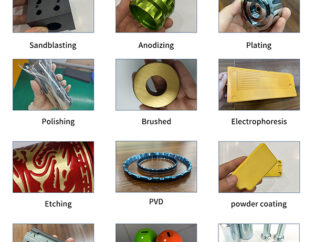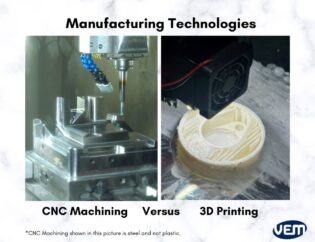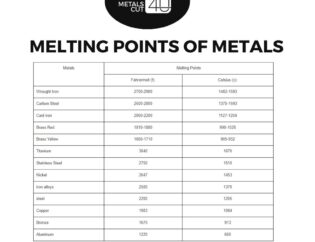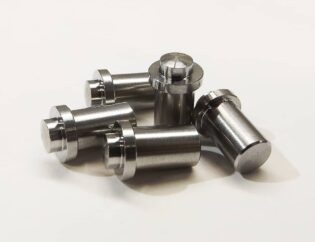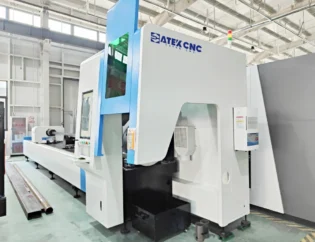Acrylic manufacturing plays a crucial role in various industries, from automotive to architecture. As a versatile material, acrylic offers clarity, durability, and lightweight properties, making it a preferred choice for countless applications. Understanding the intricacies of its production can empower businesses and individuals to make informed decisions about its use.
In this guide, readers will explore the entire acrylic manufacturing process, including raw material selection, polymerization techniques, and finishing methods. Each section will provide insights into best practices and innovations that enhance quality and efficiency.
Additionally, the guide will delve into the environmental considerations and sustainability practices within the acrylic industry. By the end, readers will gain a comprehensive understanding of acrylic manufacturing, equipping them with the knowledge to navigate this dynamic field effectively.
Acrylic 101: Properties & Manufacturing Process Explained
Are you curious about how acrylic is made? Acrylic is known as polymethyl methacrylate (PMMA), a very popular material used in a wide range of applications such as medical devices to consumer products. The versatility, transparency, and strength of acrylic material have made it an increasingly popular choice in modern times.
Understanding Acrylic
Acrylic, or PMMA, is a synthetic polymer that is widely used due to its excellent optical clarity and durability. It is a lightweight alternative to glass, making it ideal for various applications, including signage, displays, and protective barriers. The manufacturing process of acrylic involves several steps, including polymerization, purification, and final product formation.
Technical Features of Acrylic
Acrylic possesses several technical features that make it a preferred choice in many industries. Below is a comparison table highlighting these features:
| Feature | Description |
|---|---|
| Transparency | Acrylic offers high optical clarity, allowing up to 92% light transmission. |
| Impact Resistance | It is significantly more impact-resistant than glass, reducing breakage risk. |
| Weather Resistance | Acrylic is resistant to UV light and weathering, making it suitable for outdoor use. |
| Lightweight | Acrylic is much lighter than glass, facilitating easier handling and installation. |
| Versatility | It can be easily molded, cut, and shaped for various applications. |
| Chemical Resistance | Acrylic is resistant to many chemicals, making it suitable for various environments. |
| Color Options | Available in a wide range of colors and finishes, enhancing design flexibility. |
Types of Acrylic
Acrylic can be manufactured in various forms, each suited for specific applications. The following table outlines the different types of acrylic and their characteristics:
| Type | Description |
|---|---|
| Extruded Acrylic | Produced by forcing melted acrylic through a die, resulting in sheets with good clarity and lower cost. Commonly used for signs and displays. |
| Cast Acrylic | Made by pouring liquid acrylic into molds, offering superior optical clarity and impact resistance. Ideal for high-end applications like aquariums and displays. |
| Acrylic Rods | Cylindrical shapes used in applications requiring strength and transparency, such as laboratory equipment. |
| Acrylic Tubes | Hollow cylindrical forms used in various applications, including lighting fixtures and structural components. |
| Acrylic Sheets | Flat sheets used in a variety of applications, from windows to protective barriers. Available in both cast and extruded forms. |
| Acrylic Resin | Liquid form used as a binder or coating in various applications, including paints and adhesives. |
The Manufacturing Process of Acrylic
The manufacturing process of acrylic involves several key steps:
1. Monomer Preparation
The process begins with the preparation of monomers, primarily methyl methacrylate (MMA). These monomers are mixed with a stabilizer to prevent premature polymerization.
2. Polymerization
The next step is polymerization, where the monomer mixture is subjected to heat and a polymerization initiator, such as benzoyl peroxide. This initiates a chemical reaction that forms long chains of PMMA.
3. Purification
After polymerization, the mixture undergoes purification to remove any residual monomer and impurities. This is crucial for ensuring the final product’s quality.
4. Final Product Formation
The purified polymer is then processed into the desired final product using techniques such as casting, extrusion, or injection molding. This step allows for the creation of various shapes and sizes of acrylic products.
Applications of Acrylic
Acrylic is used in a wide range of applications due to its unique properties. Some common uses include:
– Signage and Displays: Acrylic’s transparency and ability to be easily shaped make it ideal for signs and displays.
– Windows and Skylights: Its lightweight and impact-resistant nature make it a popular alternative to glass.
– Lighting Fixtures: Acrylic is often used in lighting applications due to its excellent light transmission properties.
– Furniture: Modern acrylic furniture is lightweight, durable, and easy to clean, making it a popular choice for contemporary designs.
– Aquariums: Acrylic’s clarity and strength make it a preferred material for aquariums, allowing for custom shapes and sizes.
Environmental Considerations
While acrylic is recyclable and can be made from recycled materials, its production can be energy-intensive. Companies like flacrylic.com and www.acmeplastics.com are exploring sustainable practices to minimize environmental impact, such as using renewable energy sources and implementing recycling programs.
Conclusion
In conclusion, acrylic is a versatile and durable material that has become a staple in various industries. Its unique properties, including transparency, impact resistance, and lightweight nature, make it an ideal choice for applications ranging from signage to medical devices. As the demand for acrylic continues to grow, manufacturers are focusing on sustainable practices to ensure its environmental impact is minimized.
Frequently Asked Questions
1. Is acrylic really plastic?
Yes, acrylic is a type of plastic known as polymethyl methacrylate (PMMA).
2. What are the main uses of acrylic?
Acrylic is used in signage, displays, windows, lighting fixtures, furniture, and aquariums.
3. How does acrylic compare to glass?
Acrylic is lighter, more impact-resistant, and offers better optical clarity than glass, making it a popular alternative.
4. Is acrylic eco-friendly?
Acrylic can be recycled, but its production can be energy-intensive. Sustainable practices are being adopted to reduce its environmental impact.
5. Where can I find acrylic products?
Acrylic products can be found at various suppliers, including flacrylic.com, acrylicpedia.com, www.acmeplastics.com, www.mcneallplastics.com.au, and www.akrylix.com.

